Urban Design practices have always been created in response to emerging and overlapping city models and the disciplinary contexts designers find themselves in. I have found that the urban ecology framework of Patch Dynamics has been key in allowing me to see how city models such as the megalopolis and the megacity interact and generate urban ecosystem change [see Note 1, at the end of the blog]. Your first though about a patch may be that of a shape that changes. However, the concept of a patch in this case describes a set of patches or a mosaic that changes over time. My search is not to find or create the best patch mosaics, or those that function in the most resilient ways. Instead, it is a project of creating urban design practices and strategies for a diversity of urban actors to engage their patches and democratize the resilience cycle in their own ways.
This post is partly a how-to-draw-a-patch guide, and partly a reflection on Patch Dynamics, an ecology framework that is being re-engaged by colleagues and myself as a shared tool between urban ecologists and urban designers. There are two recent papers that describe the ecological and urban design theory for the development of this work to date [2]. This post will not attempt to summarize that work but rather will spiral out from it. It reflects on what patches, as the basis of a drawing system for professionals in urban social-ecology, stewardship, resilience, sustainability, policy, design and planning, as well as informed citizens, can and cannot do. This post is illustrated with examples of how the author has been engaging patches in urban design research in India, China, and at The New School in New York [3].
Patches here are engaged as an experiment toward the design of an adaptive mosaic approach to urban change [4]. This is an approach that seeks to maintain a diversity of future options rather than targeting specific outcomes. In this post, patch drawings are shared as a tool that can generate a discursive space. They act to visually communicate the way urbanization intensifies and ages in patchy and complex spatial patterns with biodiversity changes lagging behind or moving ahead in similarly fragmented ways. They aim to foster ways that people can recognize, not just experience, what Steward Pickett describes as the ecology of the city, not ecology in the city.
Patch drawings also point toward a system that permits a diversity of research questions to emerge from, overlapping, adjacent and quite similar urban landscapes; it allows for contesting views and practices to co-exist and as Lily Ling suggests, to “chat” with each other, allowing democratic politics to arise quietly and incrementally through urban ecosystem change [5].
Imagery
Learning from the examples described below, including commissioned flyover, the commissioned satellite, do-it-yourself satellite mapping, oblique aerial imagery, and informed by the release of Google Earth historical imagery in 2009 and advanced printing on Google Earth Pro, this patch guide engages creative use of aerial imagery as an urban design tool [6]. In addition it explores open source approaches, given that imagery may not be free forever or openly available in some countries [7].
In 2006 and 2007 The Baltimore Ecosystem Study (BES) commissioned airplane derived, false color infrared imagery of the Gwynns Falls Watershed, Baltimore. The two sets were used as the origin of a comparison and the high-resolution digital imagery was used as the basis of the first GIS based patch dynamic analysis called HERCULES (High Ecological Resolution Classification for Urban Landscapes and Environmental Systems). This work was published in a 2007 paper titled “Spatial heterogeneity in urban ecosystems: reconceptualizing land cover and a framework for classification” [8], as well as in the book, “Designing Patch Dynamics” [9].

In 2003 Laura Kurgan purchased data from Quickbird-2, a high resolution Earth-Observation satellite that only collects images if requested to do so. Her project titled Monochrome Landscapes was both a political and environmental activist statement as well as an innovative use of satellites as drawing tool. She selected four sets of co-ordinates of four spots on earth in which almost nothing but snow, water, trees or sand is visible. The satellite went there, collected imagery data that was later exhibited as a set of Cibachrome prints in a gallery [10]. In her words “they are photographs: information, surface, pattern, change encounter, event, memory field of color” and “they were also places that were contested, fragile, and subjected to an increasingly through surveillance apparatus.”
In 2010 Jeff Warren, the founder of grassrootsmapping.org led a balloon and kite aerial mapping workshop for students of Street Life and Mapping the City at The New School. Grassroots Mapping, which is now part of Public Laboratory for Open Technology and Science, has designed a range of participatory mapping projects involving communities in cartographic dispute. They have built a global community of mappers who are engaged in civic issues with low-cost mapping tools like balloons, kites, and remote-control airplanes. Lessons include how to hack a cheap camera, how build a crash proof housing out of a soda bottle, and tape it together into a giant tetrahedron made out of mylar survival blankets. This type of do-it-yourself satellite creates high-resolution imagery of a local area that can be “orthorectified” or “georectificied” and shared. The charismatic balloon attracts everyone who walks by and therefore could be itself a type of social research apparatus.
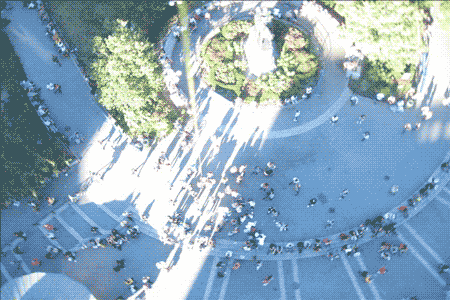
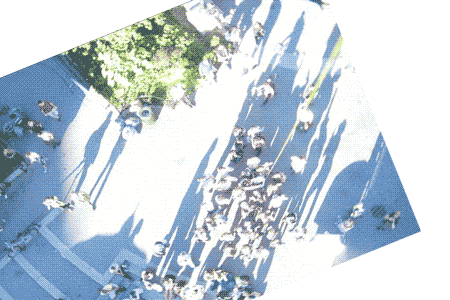
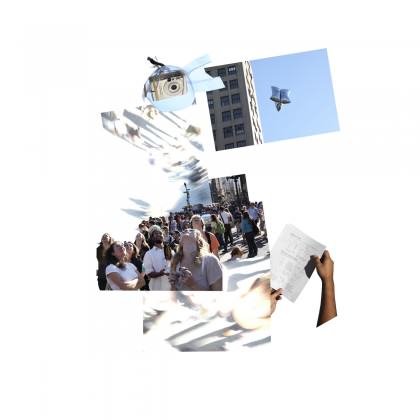
In 2010 an installation, titled Backwater Frontwaters, used oblique aerial imagery to bring forward two overlooked backwaters of the Hudson Raritan Estuary—Minetta Brook beneath Greenwich Village and the Newark Bay Wetlands under Newark Liberty Airport and Port of Newark. As part of the Living Concrete/Carrot City exhibition at the Sheila Johnson Design Center the project was a study of patches at two scales: the watershed and the block. Patches were individually arrayed in long vertical strips of paper that were hung from the ceiling like a curtain. In between each patch strip were student projects that engaged the watershed space, engaging memory, microclimate rhythms and everyday life patterns repeated over time in many extremely local experiments—e.g., tree pits, roof top planters, community gardens and new urban form. The installation aimed to demonstrate an approach to urban design where fine grain patchiness makes a difference. Land-cover patches change shape regularly in relation to flows of people, matter and information. The Backwater Frontwaters projects were designed as agents of change within these dynamic patches, altering and responding to moving patch boundaries in conscious and imaginative ways.
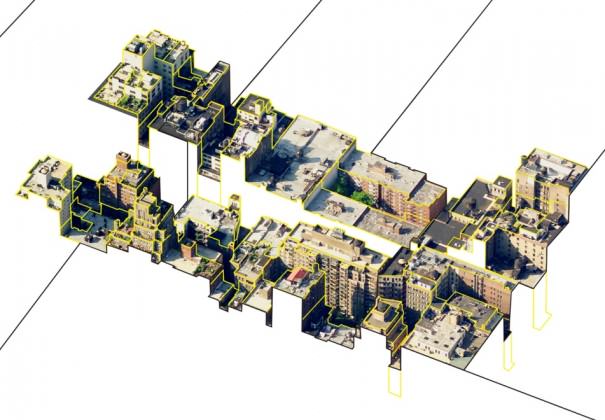
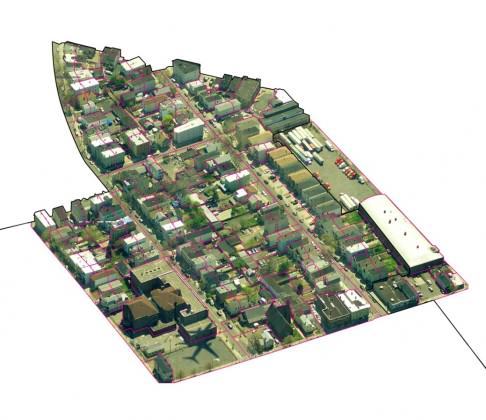
Patch guide
Patchguide is a simple PDF that will show you how to create a patch drawing. In it you will find instructions on how to save and arrange your base imagery in Google and then create a layered file in Adobe Illustrator. You will then learn how to draw lines, how to create narratives, and then how to save your patch maps. This is a system of making that anyone who is familiar with the Adobe Creative Suite will recognize. For sure there are better ways to do this, for example it could be more high tech and automated (excluding some people) or it could be lower tech using printouts and pens for example (more inclusive).
Learning from the 2007 paper titled “Spatial heterogeneity in urban ecosystems: reconceptualizing land cover and a framework for classification” [11] there are four simple things to remember before you start.
First, patches are based on land cover, not land use. Its about what covers the land, not how it is defined as being used or anticipated to be used by strategic land use zoning categories such as residential, commercial etc. In other words land cover doesn’t confound the complexity of the city by mixing structure and function. The land cover types are buildings, pavement, bare soil, fine vegetation, coarse vegetation.
Second, a patch boundary is a line that marks differences in the mix of land cover types. In other words, a boundary is located where the heterogeneity of land cover mixes change.
Third, patches change shape and they do so in two ways. First the boundary can stay the same and the contents change. Or, the boundary can move, either becoming bigger or smaller as patches around it or inside of it change (see below.)
Finally the size of a patch depends on your research question. For example you can draw the patches of your block, neighborhood or your watershed.

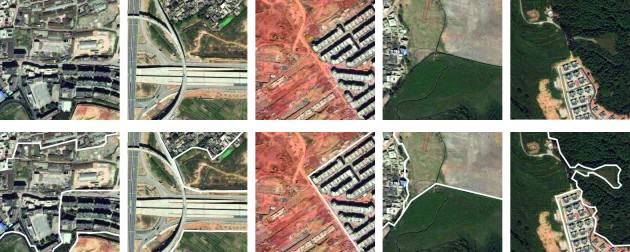

There are two things to keep in mind while you are in the middle of the drawing process: When you determine your minimum patch size consider it a rule, make notes and follow it. Later if others work with your drawing to add more patches they will be able to follow your rule. For example, a road cannot be a patch, unless it’s a wide highway, or a building cannot be its own patch, unless it’s a gigantic shopping mall. Going the other way, when you find that you are left with a big heterogeneous patch, you will need to make a decision to leave it or to break it up into smaller patches.
Second, as you finish one layer and then move to the next e.g. 2005 to 2007, you will find that you will need to go back and edit some previous patches. This can take time; however this slow process is an important stage in which you learn the particularities of your site. New patterns emerge the longer you look however there is a moment when your rules read evenly across every layer and you can shift to making narratives.
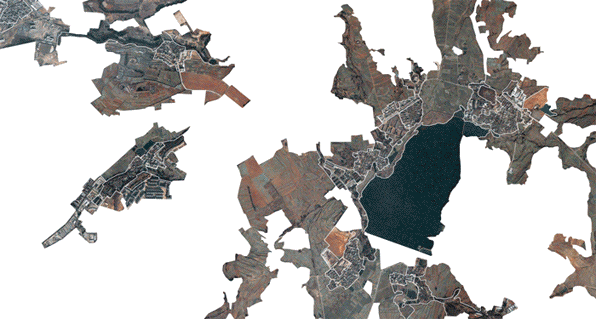
When you create your narrative there are many possibilities for example you can ask an objective or a subjective research question (see below.) It may come from your disciplinary expertise and capacity or it may come from the place. One is not better than another. The key is that the patch drawing system can accommodate many questions. For example, you may be interested in the bird diversity in the patch where you live, your neighbor may also be interested in the same patch but in relation to storm sewer flows. Someone else may be researching your neighborhood patch type in comparison with similar types in other cities around the world. In this way patch dynamic narratives provide the basis to share multiple ways of seeing, imagining, and monitoring.
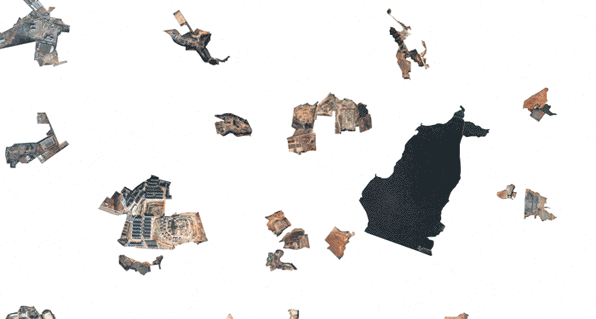
Here are some harder things to understand about patch dynamics. As mentioned above, it is a framework that can be applied at any scale. In this way it is similar to the ecosystem concept. When it is applied to the world it becomes a model. The scale, at which it is applied, depends on your research question. So you ask, how big is a patch? The answer is, it depends on your question. For the Kunming patch drawing, this area was chosen, as it appeared to be the most heterogeneous part of the city. A commitment was made to study a large area as the author hadn’t visited China at that stage and wanted to learn as much as possible through drawing, first. On reflection, this drawing was sometimes too big to “hold.” It may therefore be better to do many smaller drawings, faster.
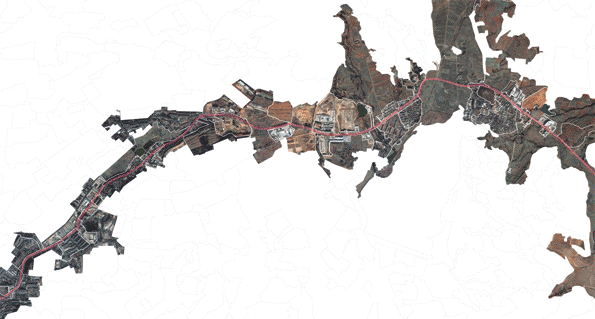
There are three things that patches don’t do
First, patches explain land cover change, however they need to be correlated with other data sets such as social groups in order to learn how the heterogeneity within the city interacts with the social heterogeneity of the city and how together, they function.
Second, for this drawing method at least, Google doesn’t work at the close up scale. Similarly at bigger scales the imagery contrast of different flyovers creates ‘fake’ patches and zoomed out imagery creates ‘muddy’ city-regions.
Third, the patch classification doesn’t include water as a class, however it certainly could. For example, the daily rhythm of satellite circumnavigation of the earth has the potential to visualize urban seasonal change, in particular the monsoon cycle of Asian coastal regions, where most urbanization is taking place.


Conclusion
Kunming is the largest city in Yunnan, a province of northwest China. It is located on the northern edge of the famous Lake Dian. Today this lake is extremely polluted, a legacy of filling in wetlands, which accelerated during the political campaign of spring of 1970, overfishing, a shift to the sanitary city (without constructing the waste treatment facilities,) and the more recent effects of the shoreline flower industry, the largest in China. The area in this patch drawing is on the northeastern edge of the city, upstream, in an area located between the new ring road and the new international airport. It wasn’t chosen because for its rhetorical potential as a new urban form, or a site of innovative social change. It is actually a somewhat unremarkable area and was simply chosen as it was heterogeneous, changing fast, and therefore easy to draw using satellite imagery.
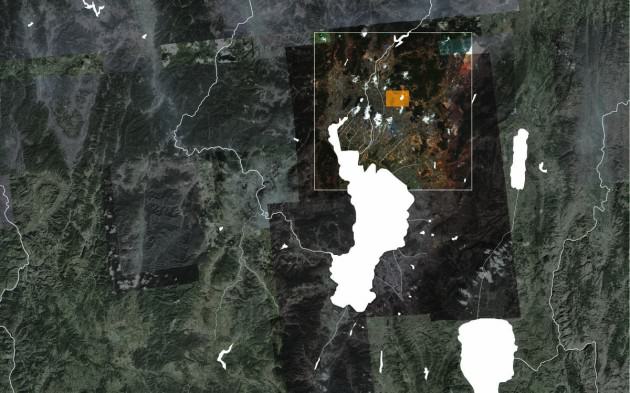
Drawing the patches of a city-region is not a search for an ideal patch type, or an ideal urban form, rather it is to learn about the dynamics of the mix. For urban designers and urbanists the next step is to design an urban practice that is responsive to the mix and aims toward a more resilient dynamic. Patches bring everything into the field of view and allow for sorting as a creative and democratic act. They are a type of granular sketch that is shareable and updatable and could be used to create a model as well as new urban design practices.
But first, there is simply the project of learning how to draw and in the process to see urban change remotely and in the street. Making the most of new media and new technology this post shares this drawing system as a tool that contributes to the design of an adaptive mosaic approach to urban change, and as an urban designers contribution to the emerging field of urban ecology.
Victoria Marshall, with M.L. Cadenasso, Colin Macfadyen, Brian McGrath, S. T. A. Pickett
Victoria Marshall ASLA LLA
Principal, TILL Design
, tilldesign.com
Newark, New Jersey USA
[email protected]
M. L. Cadenasso
Associate Professor
University of California Davis, Department of Plant Sciences
[email protected]
Colin Macfadyen
Artist and Integrated Designer
colinmacfadyen.info
[email protected]
Brian McGrath
Associate Professor of Urban Design
Urban Design Research Chair
Parsons the New School for Design
[email protected]
S. T. A. Pickett
Cary Institute of Ecosystem Studies
Director, Baltimore Ecosystem Study
[email protected]
Notes
1 — Haar, S. and V. Marshall, 2013. Mega Urban Ecologies. IN Urban Design Ecologies Reader, B. McGrath (ed.). London: Wiley.
2 — Cadenasso, M.L., S. T. A. Pickett, B. McGrath and V. Marshall. 2013. Ecological Heterogeneity in Urban Ecosystems: Reconceptualizing Land Cover Models as a Bridge to Urban Design. IN Resilience in Ecology and Urban Design: Linking Theory and Practice for Sustainable Cities. S. T. A. Pickett, M. L. Cadenasso, B. McGrath (eds). Dordrecht: Springer.
Cadenasso, M.L.. 2013. Designing Urban Heterogeneity. IN Urban Design Ecologies. Brian McGrath (ed). London: Wiley.
3 — Research in China is supported by the India China Institute http://indiachinainstitute.org/; Research in Patch Dynamics is supported by the Urban Design Working Group, at the Baltimore Ecosystem Study. http://www.beslter.org/
4 — F.S. Chapin et al. 2011. Earth Stewardship: Science for Action to Sustain the Human-earth System. Ecosphere. Vol. 2 (8), Article 89.
5 — L.H.M. Ling, (forthcoming.) The Dao of World Politics: Towards a Post-Westphalian, Worldist International Relations. London: Routlege.
6 — McGrath, B. and G. Shane. 2005. AD:Sensing the 21st Century City: Up close and remote, Vol. 75 (6).
7 — As an alternative to Google Earth, the patch guide includes notes on Open Street Map, which is an open source platform. http://www.openstreetmap.org/
8 — Cadenasso, M. L., S. T. A. Pickett, and K. Schwarz. 2007. “Spatial heterogeneity in urban ecosystems: reconceptualizing land cover and a framework for classification.” Frontiers in Ecology and Environment 5:80-88.
9 — McGrath, B., V. Marshall, M. L. Cadenasso, M. Grove, S. T. A. Pickett, R.A. Plunz, and J. Towers. 2007. Designing Patch Dynamics: Baltimore. New York: Columbia University.
10 — Architecture By Numbers at Whitney Museum of American Art at Altria 2004. http://whitney.org/file_columns/0000/3587/may_2004_architecture_.pdf
11 — Cadenasso, M. L., S. T. A. Pickett, and K. Schwarz. 2007. Spatial heterogeneity in urban ecosystems: reconceptualizing land cover and a framework for classification. Frontiers in Ecology and Environment 5: 80-88.


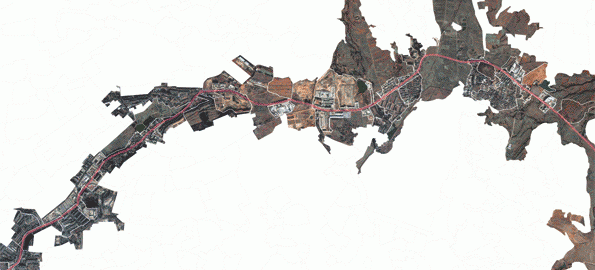






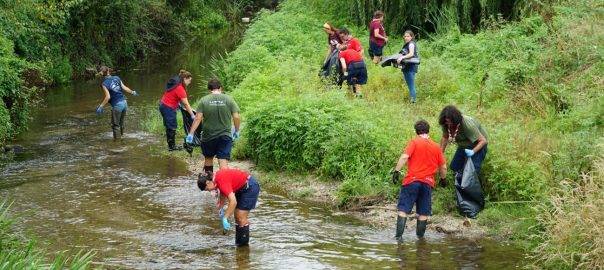
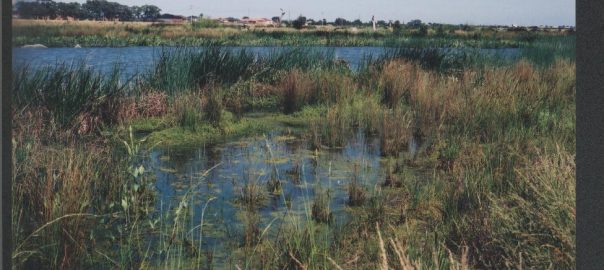
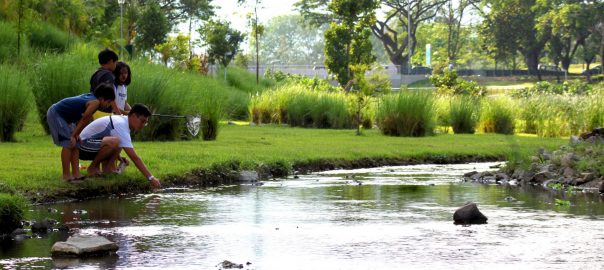
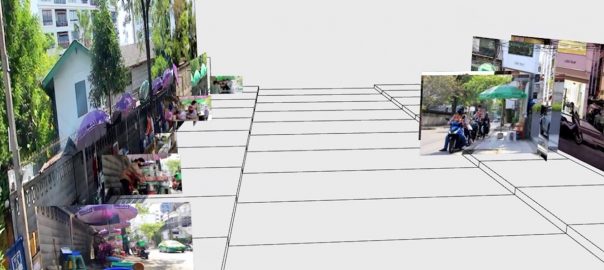
Leave a Reply